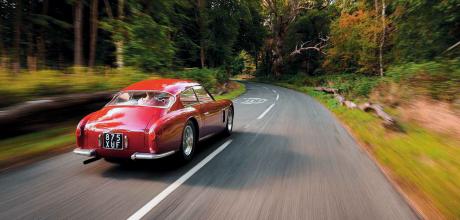1956 Maserati A6G/54 Zagato
The Maserati A6G/54 is a thinly disguised racer with just enough civility for the road – beautifully wrapped in ultra-lightweight Zagato bodywork. Peter Tomalin is treated to a rare thrill.
Heat light
Photography Dean Smith
Lightest and brightest of the breed
Maserati and Zagato.
Two of the most revered and storied names in our small corner of the universe. Both have suffered the odd misfire, but at the peaks of their powers they had an aura and an ability to inspire desire like few others. And when their talents converged in the mid-’50s, the results were little short of transcendental. The masterpiece you see here is a Maserati A6G/54 Zagato, and I think I might be in love.
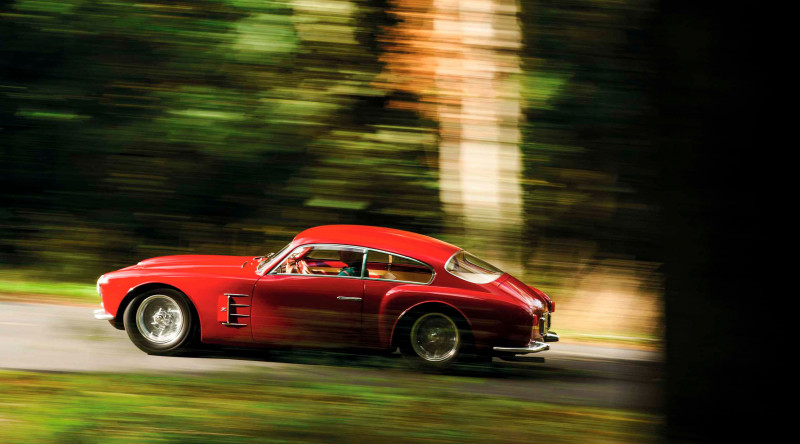
The A6 series was the first fruit of Maserati’s post-war flowering. The earliest cars were pure racers but the series evolved and expanded to include GT cars, of which the A6G/54 (signifying the year of its introduction) was the ultimate evolution. A mere 63 were built, and various coachbuilders clothed the rolling chassis produced by Maserati. They included Frua and Allemano, but the Zagato berlinettas are – and were – especially valued for their streamlined forms and low weight (always the two key Zagato traits). Many were raced in-period on such events as the Tour de France and Giro de Sicilia while doubling as road cars.
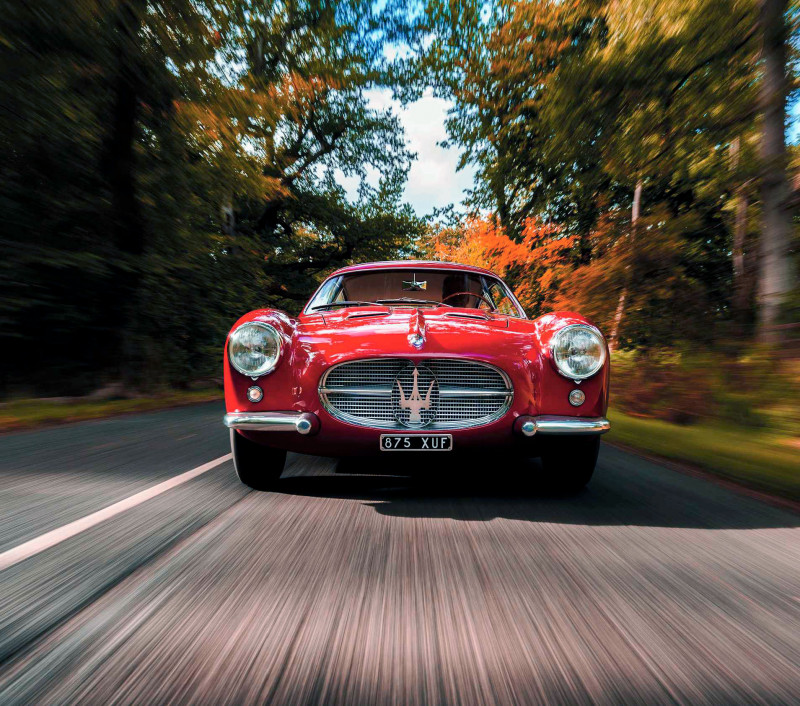
Under the skin they were closely related to the fabulous A6GCS racer, with a lightweight tubular steel chassis and race-proven braking, steering and suspension components. And at their heart was a 2.0-litre all-alloy straight-six with twin overhead camshafts, distantly related to the Formula 2 race engine designed by Gioacchino Colombo but developed by Vittorio Bellentani to make it more suitable for road use. That meant employing chain- rather than gear-driven camshafts, wet- rather than dry-sump lubrication, revised cam profiles, distributor ignition in place of a magneto, and various other changes, all to make it more civilised, less raucous and less high-maintenance. Maserati claimed 150bhp; even allowing for the usual period hyperbole, that was quite something from just two litres.
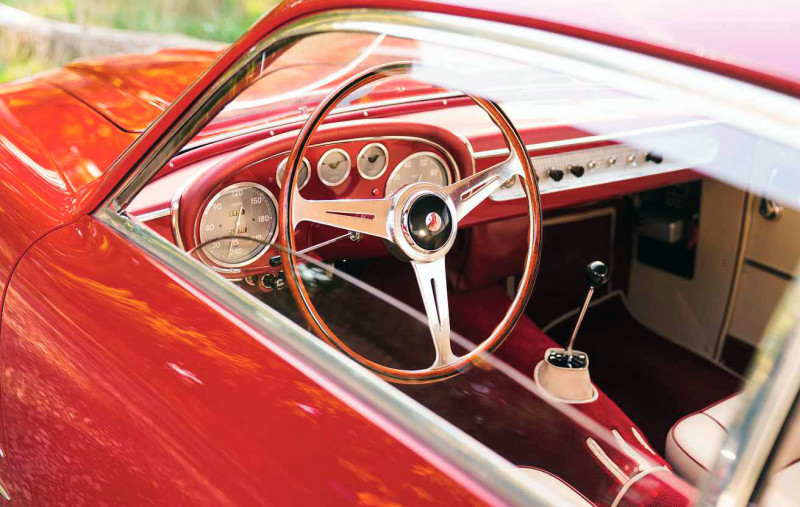
This particular car is chassis 2186 – a late-production A6G/54 and the very last of the 21 Zagato-bodied cars (20 of which were coupés, with just one spyder).
No two were the same, the shape and details gradually evolving over the two-year production run, and other features being agreed between customer and carrozzeria. So this one has a larger grille than earlier examples, those distinctive vertical air vents in the front wings, particularly curvaceous rear wings, two separate bonnet scoops, vestigial bumpers in aluminium, and an oval-shaped instrument binnacle. Reflecting its dual roles as road car and racer, Perspex was used for all the glazing bar the front windscreen.
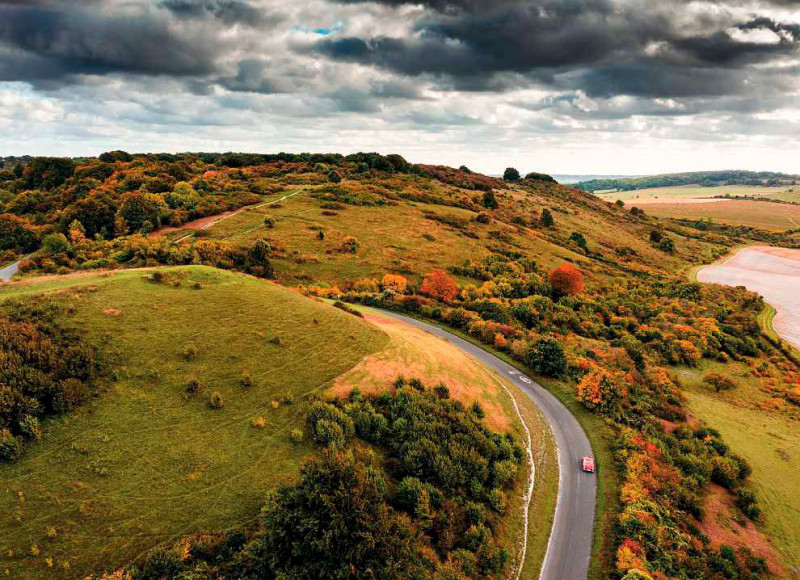
It was ordered in 1956 by Charles Rezzaghi of Mille Miglia Motors Inc of San Francisco, completed on 31 October and shipped out to California, where it subsequently competed in a number of sports car races and later underwent a colour change from red to silver.
Rather more drastically, when it was retired from competition in the early ’60s, its then owner, Frank Jay Hoke, replaced the Maserati straight-six with a Buick V8. Which sounds like sacrilege but was purely pragmatic: as such exotics got older, spares were virtually unobtainable, so if the engine broke it was not uncommon to install a home-brewed V8 under the hood. Happily for 2186, a later owner was able to reunite the car with its original engine, and it has since been restored to its original colour scheme and the eye-popping condition you see today. Its current owner is San Diego-based architect and collector Jonathan Segal, a good friend of Octane and a man whose taste is hard to fault: regular readers may recall his sublime 1950 Alfa Romeo 6C 2500 SS Supergioiello (‘super-jewel’) from issue 225. Other gems in his collection include a gorgeous Alfa TZ1.
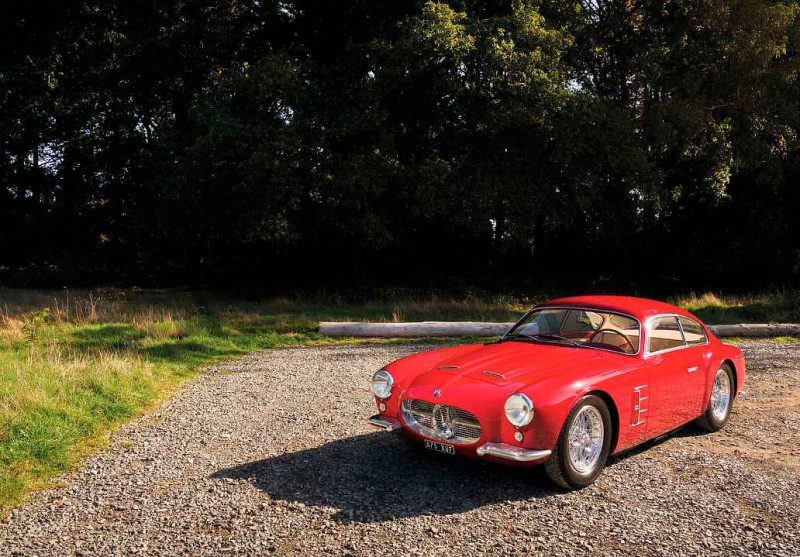
Jonathan’s first love, however, is Maserati, and the model he appears drawn to more than any other is the A6G. In recent years he has acquired the ex-Baillon collection Frua A6G that appeared on the cover of Octane 167, the companion A6GCS Spyder version, and an A6G Allemano. But it’s the Zagato-bodied car that he cherishes the most and which he calls ‘my baby’. It is, as he told James Elliott in issue 225, ‘the car I have wanted all my life; I searched all over the world for that one.’
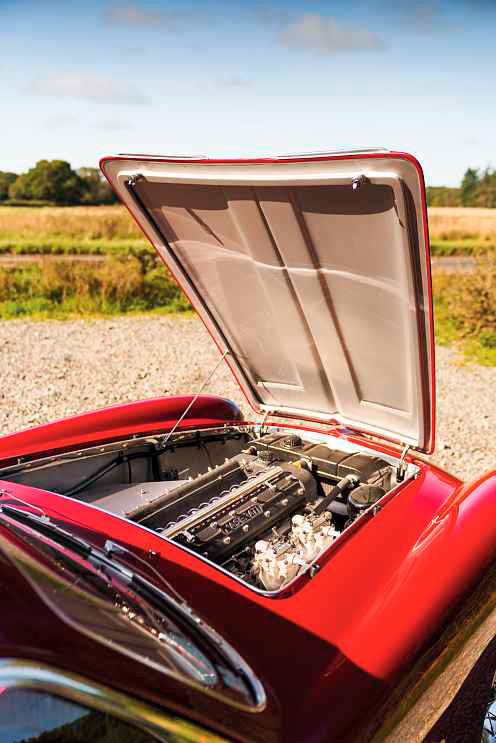
Appearances at the world’s leading concours events have only reinforced his conviction. At Pebble Beach in 2021 the Zagato wasn’t only a class winner, it made the final three for Best in Show and scooped the Strother MacMinn Most Elegant Sports Car award. Its value today is in the region of £5million.
Which focuses the mind a treat as we arrive at Hitchinbased specialist McGrath Maserati to find the Zagato in the centre of the workshop, fuelled, warmed through and ready to go, on a mercifully crisp, bright autumn morning. Yesterday it was raining and miserable; tomorrow it will be, too. The motoring gods are smiling down on us.
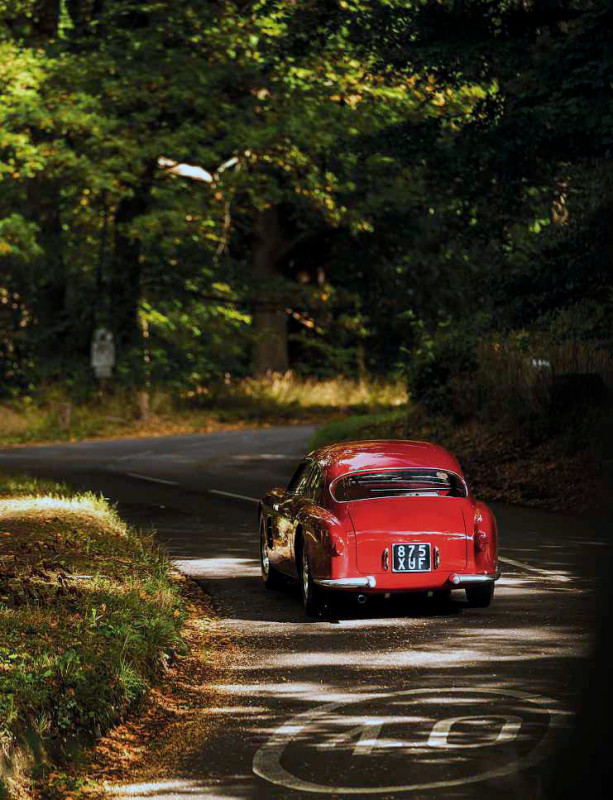
The Maserati is looking as perfect as can be, as though it’s just been rolled back into the ’shop after an appearance at Hampton Court or Villa d’Este. I’m reassured by the knowledge that Jonathan is not afraid to use it – he has driven it on major rallies in both the States and in Europe – and yet I can sense a certain tension among the McGrath team, who are understandably protective as I slide onto the small, immaculately trimmed driver’s seat and close the breathtakingly thin, featherweight door behind me. How will a concours superstar feel when it rolls onto the pockmarked tarmac of Hertfordshire rather than the clipped lawns of Hampton Court and joins the cut and thrust of modern traffic, running among the DPD vans and school-run SUVs? We’re about to find out.
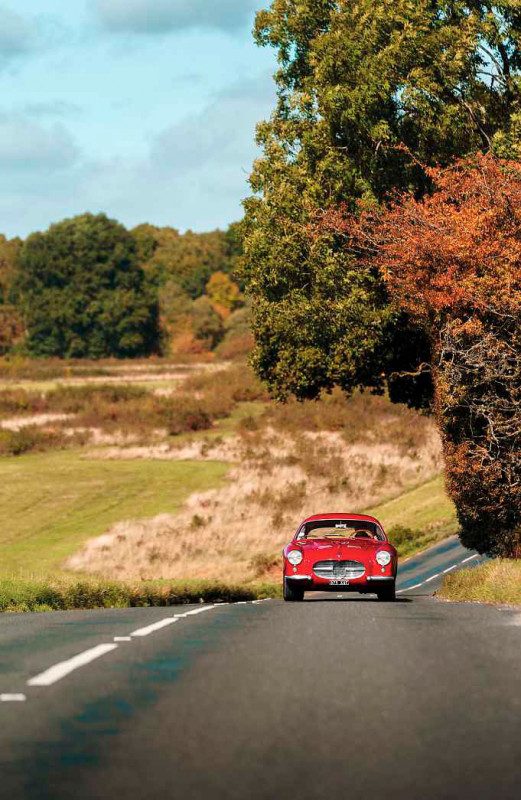
Take a few moments to get comfortable first. The driving position is classically Italian, arms outstretched, knees bent and splayed, and the throttle sits slightly higher than the brake pedal, which requires your right knee to be pulled even higher. The broad, wood-rimmed wheel is also set quite high in relation to the dash, and I note that its spokes are perfectly positioned to obscure substantial parts of both the speedometer and rev-counter (the latter running to a very Italian 8000rpm). At least the minor gauges, marked olio, benzina and acqua, are unobscured, and what beautiful pale-grey faces they have.
With the straight-six warm there’s no need to prime the Weber carburettors; simply turn the key in the centre of the dash through 180º, then push same, and with barely a breath of throttle the straight-six bursts into life. It sounds busy, lots of chatter and thrash, while blipping the throttle elicits a pleasing induction roar. What strikes you immediately is how instantly reactive the engine is to the right pedal; merely touch it and the revs fly.
In contrast, the steering is predictably heavy, at least until you’re up to speed. And while the engine is bursting with energy, the transmission won’t be hurried. The clutch is only moderately heavy and nicely progressive, but the four-speed ’box with its lovely, polished metal gate requires a slow hand to ease through the changes without defeating the synchromesh. So light and eager does the rest of the car feel that you almost have to force yourself to count through the changes – ‘one-and-shift’ – to avoid a painful gnashing of gear-teeth.
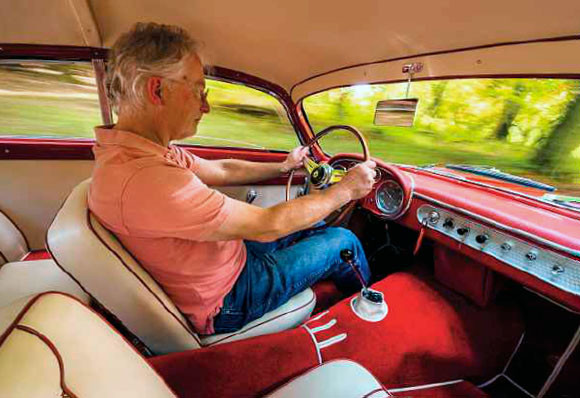
All of this is doing little to steady my heart-rate in these early miles, and all the while I’m acutely conscious of the vulnerability of the super-thin alloy panels that surround me. It’s quite a long car – the stretched wheelbase allowed two small seats in the rear, another nod to its GT aspirations – but a delightfully narrow one by modern standards. It’s an intimate little cockpit, with a wonderfully evocative view through the shallow, wraparound screen and good all-round vision. Still, on the narrow lanes that lead from McGrath’s base, I’m glad to have photographer Dean Smith’s Range Rover ahead, parting a way and dissuading oncoming traffic from trying to squeeze past.
After 45 minutes or so, including a painful crawl through the centre of Dunstable because of a road closure, I’m somewhat relieved when we pull off the road for the first photographs. The frenetic-sounding engine and the chuntering of gears; the weight of the steering; trying to match road and engine speed when changing down the ’box without being able to heel-and-toe because of the height of the throttle… it’s good to take a breather and shake out some of the tension in my limbs.
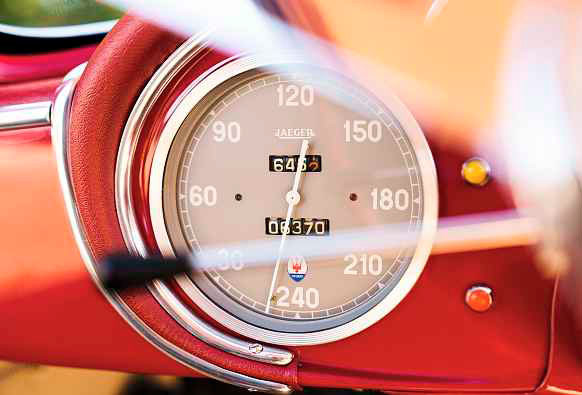
It really is a stunning-looking machine: hints of DB4 GT Zagato in the rear haunches and side-glazing, but very much its own thing. No double-bubble roof on this car, though other Zagato-bodied A6Gs included that signature. Details such as the recessed alloy doorhandles that pop out at the press of a button, and the sculptural bumpers – again in lightweight alloy – are just lovely. Open the bonnet and drink in the crackle-finish cam covers on the twin-plug cylinder head, the trio of Weber 40DCO3s, the triangulated chassis tubes visible in the nose. The engine sits well back, the front roughly level with the axle line, so far back that the camshaft-driven distributor disappears into the bulkhead. This could account partly for the levels of noise in the cabin – the engine’s virtually in there with you!
‘The racing car was only just below the surface. And once you use the revs, it doesn’t hang about’
With each subsequent stint at the wheel as we move between locations, gradually I relax into the car. The steering’s really rather nice, with little of the slop that can afflict cars of this era. It’s a slightly unusual arrangement with unequal-length steering arms and no idler, but it works well – reactive and responsive and quite high-geared for a non-assisted set-up; only in the tightest turns do you really have to haul on the wheel. The sides of the tiny seat wrap around you and give quite a bit of support, so you’re not left hanging onto the wheel in bends. Body-roll is well contained and the A6G resists understeer gamely, moving all-of-a-piece and finding surprising grip from its skinny-looking Pirelli Cinturatos on the glinting, Pebble-spec Borrani wires.
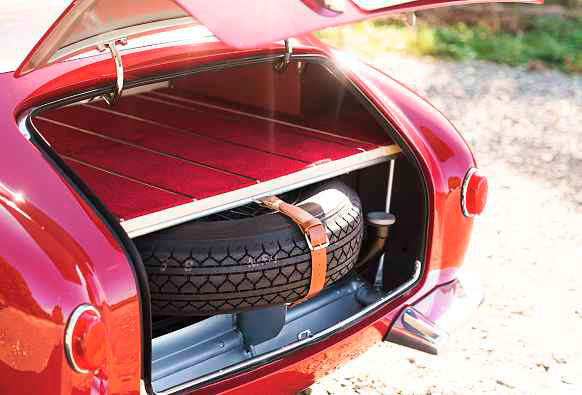
The ride is certainly robust – it’s no surprise to learn that the front suspension bushes are all brass – and the rear will occasionally skip and hop as you’d expect from a leaf-sprung live axle, but the overriding impression is of a taut, tied-down chassis with no bagginess and no nasty surprises. Once again the car’s lightness shines through here in its willingness to change direction. Indeed, you can sense the lack of inertia in absolutely everything, including braking. There are sizeable vented drums all-round, the pedal feel’s pretty good and there’s meaningful retardation, but then there’s only 850kg of Maserati to arrest. Today’s EV battery packs weigh more than that.
Under load, the 2.0-litre twin-cam sounds magnificent, with a raucous six-cylinder bark that speaks of its racing roots. Wait for it to climb onto the cam, now open the throttle wide, and from around 3500rpm to our selfimposed limit of 6000 there’s a real urgency to its delivery, the exhaust cutting through above the full-blooded induction roar, possibly amplified by the fact that the pipe runs just below the sill on the driver’s side. The engine may have been made a touch friendlier for street use – but not by much. The racing car was only just below the surface all the time. And once you use the revs, it doesn’t hang about. Maserati claimed a top speed of 125mph, which doesn’t feel overly optimistic. You might even convince yourself it’s got 150bhp at the flywheel.
You’ll overlook the sometimes recalcitrant gearbox, once you’ve got the measure of it and slowed your shifts. It’s got a nicely defined gate and the change from second to third in particular is a thing of oil-sheened delight. You also learn to finesse your throttle-blips on down-changes, right foot dancing between brake and throttle.
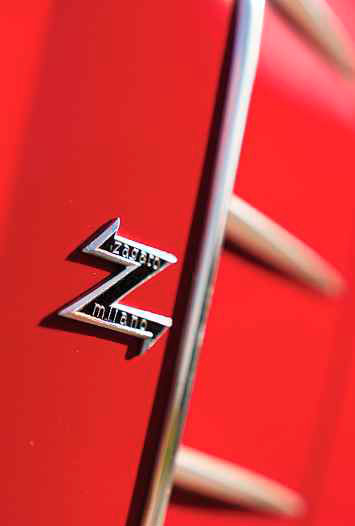
It’s easy to get carried away when writing about a car like the A6G Zagato. It’s a car with the tingle factor – literally and emotionally – a car that feels fully alive, a car with the genes and the spirit of a racer but with just enough civility to qualify as a GT. Just. The 3500 GT that followed in 1957 was a different sort of Maserati. Much less compromised as a road car, much easier to live with, but also bigger and heavier, it was built in far greater numbers and used bought-in major components – the suspension sourced from England, the gearbox and axle from Germany – whereas the A6G was a completely Maserati-made car. For the purists, then, this is the one.
As Andy Heywood, MD of McGrath Maserati, puts it: ‘The racing-car-for-the-road thing is still the romantic ideal, and people are prepared to put up with all sorts of discomfort just to experience it. The A6G/54 is the next best thing to a full-on sports-racing car like a 300S, but with a body on it and a slightly detuned engine. The truth is that the 3500 is a much nicer car to drive. But it doesn’t have that visceral thrill.’
Quite. Thrills rarely get more visceral, or are delivered in such sublime packaging. And now, if you’ll forgive me, I think I might need to lie down.
Left, above and below With a body shrink-wrapped around its mechanicals, the A6G is perfect for British roads – and lives up to its maker’s mark.
Clockwise, from top A truly elegant command post; speedo couldn’t be more Italian; spare wheel takes precedence in the boot; beautiful shape has real road presence; as gorgeous inside as outside.
Clockwise, from top left Sinuous roads are the perfect playground for this race-bred car; crouching form is perfectly judged – from front or rear; 2.0-litre triple-carb, twin-cam six good for a remarkable 150bhp.
‘At Pebble Beach in 2021 the Zagato wasn’t only a class winner, it made the final three for Best in Show’
TECHNICAL DATA 1956 Maserati A6G/54 Zagato
- Engine 1985cc DOHC straight-six, three Weber 40DCO3 carburettors
- Max Power 150bhp @ 6000rpm
- Max Torque 123lb ft @ 5000rpm
- Transmission Four-speed manual, rear-wheel drive
- Steering Rack and pinion
- Suspension Front: wishbones, coil springs, telescopic dampers, anti-roll bar. Rear: live axle, quarter-elliptic leaf springs, telescopic dampers, anti-roll bar
- Brakes All Drums
- Weight 850kg (est)
- Top speed 125mph (claimed)


